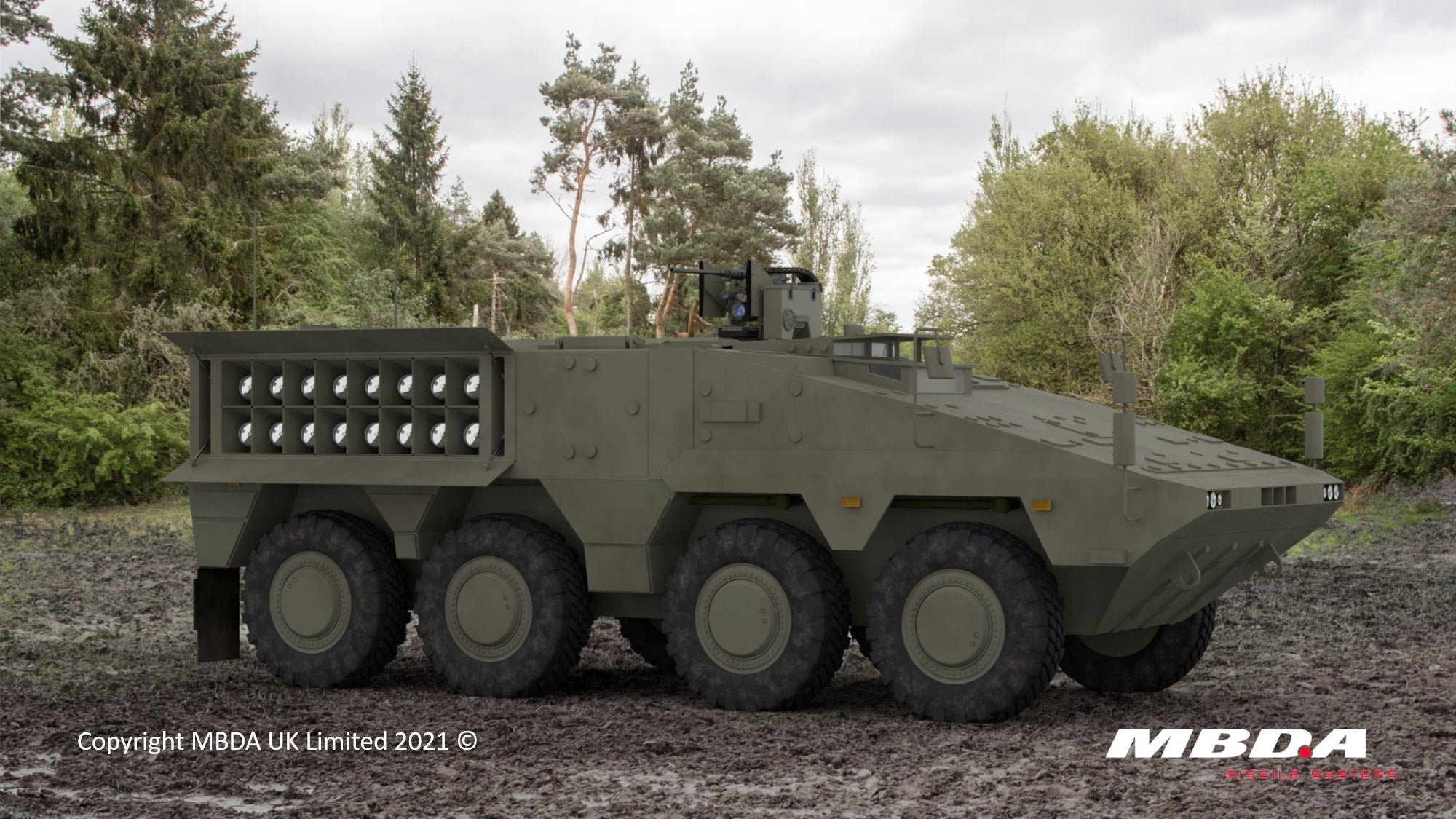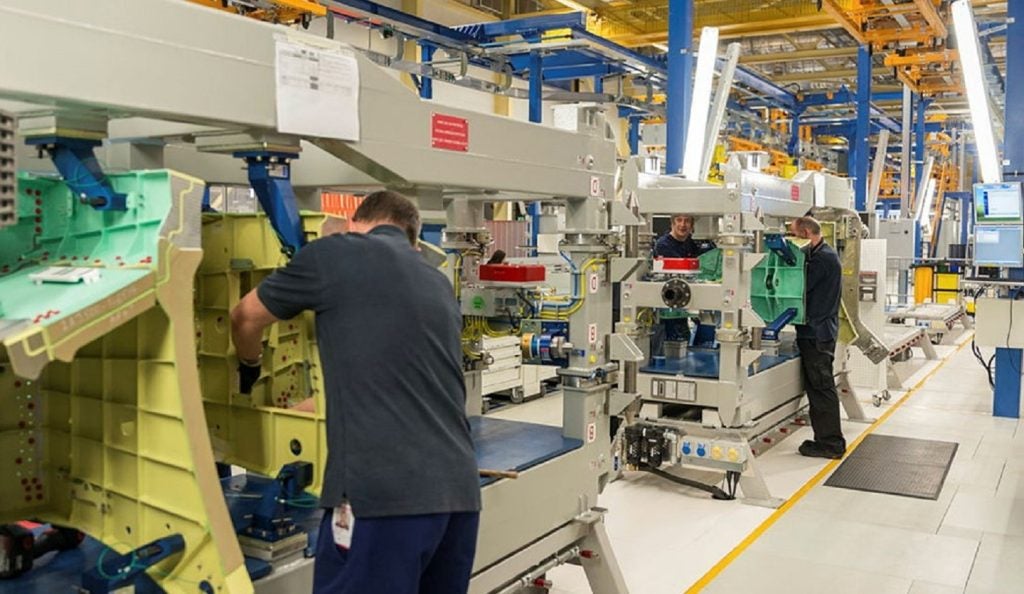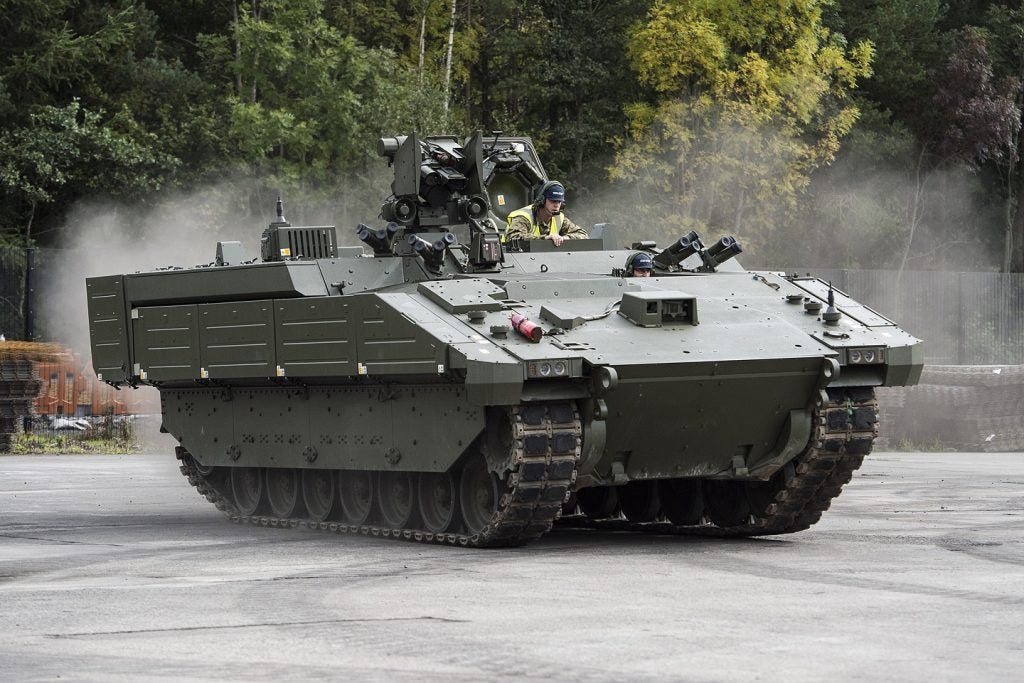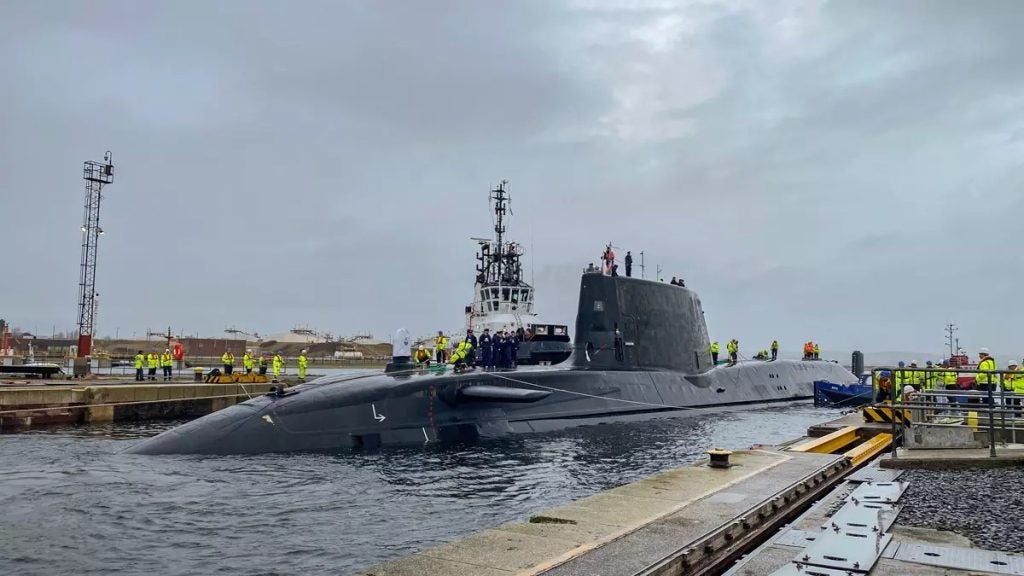
BGOAA is split across four areas: a Close-In Self Defence (CISD) capability, a long-range Mounted Close Combat Overwatch (MCCO) capability akin to the Swingfire system of the past, and mounted and dismounted Close Combat Anti-Armour Weapons (CCAAW), which will form the successor to the in-service Javelin.
The project aims to deliver commonality between effectors and launchers to drive down costs while allowing a smaller, more dispersed British force to achieve overmatch against peer threats into the 2050s.
Commenting on the existing capabilities BGOAA is seeking to replace, British Army Lieutenant Colonel Mike Baxter, S01 for Light and Medium Forces, said: “These systems were designed in the 90s and 00s, typically as dismounted systems and not optimised for fire-on-the-move. One could also suggest that, during the lifetime of these systems, they have not really faced a significant armour threat.
“But armour or threats that have to be engaged by these weapons systems have been present throughout that time, and the scale and the complexity of use of those systems have probably exceeded the designers’ thoughts when they first brought those systems into use.”
Key to developing the four BGOAA project lines is developing a Ministry of Defence-owned architecture for effectors and fire control systems that would allow anti-armour systems to be rapidly upgraded to maintain their relevance.
Baxter said: “BGOAA takes the experience of the last few years with the aim of providing accurate, long-range engagement capabilities down to the section level against armoured and non-armoured targets, It also keeps in mind the potential for state-on-state or peer-on-peer conflict and the great power competition that seems to be making a comeback in world dynamics”.
How well do you really know your competitors?
Access the most comprehensive Company Profiles on the market, powered by GlobalData. Save hours of research. Gain competitive edge.

Thank you!
Your download email will arrive shortly
Not ready to buy yet? Download a free sample
We are confident about the unique quality of our Company Profiles. However, we want you to make the most beneficial decision for your business, so we offer a free sample that you can download by submitting the below form
By GlobalData“We still need to have lethality against armoured systems because, although not all may be top of the range vehicles, there is a prevalence and a proliferation of armour, right down to some relatively less well-developed nations.”
De-risking is currently underway on technologies to enable a new generation of seekers, systems that can defeat active protection systems, new launchers and warheads.
Dstl is also looking at critical enablers, including smaller, wider spectrum, low-cost sensors; non-line of sight capabilities; third-party handoff of targeting and fire control.
Dstl is also exploring how modular systems can allow for launchers and missiles to be diffused across platforms from trucks, the Boxer Mechanised Infantry Vehicle, the Ajax family of vehicles and uncrewed systems.
Dstl is working within the Weapon Systems Research Framework and with prime contractors, Lockheed Martin, MBDA and Thales, collaborating to develop potential concepts for the project’s work areas.
 Thales future Light VLS vehicle concept. Image: Thales.
Thales future Light VLS vehicle concept. Image: Thales.
Mark Pickering, Dstl’s close combat guided weapons science and technology lead, said: “We often look at the conflicts we’ve fought over the last decade, and our future developments are slanted towards dealing with what the recent experience has shown us where we need the capability.
“The problem is that often means that we have the wrong equipment for the next generation of conflict. As part of the challenges, we need to look at being adaptable and being able to adapt to the changing environment around us, especially with the escalation of cyber technologies and similar.”
BGOAA aims to help the British Army meet several challenges, including keeping pace with rapidly developing technology, the proliferation of Active Protection Systems, and new imaging systems, making it harder to hide forces from adversaries.
Pickering added: “In the world of anti-armour, broadly we can say there have been incremental improvements in physical armour, but we’ve not seen any world-changing differences.
“However, what we have seen is quite a large proliferation in the integration of active protection systems [APS], and therefore future systems must be able to be highly capable against future APS.”
Other challenges facing the army are that dismounted systems can be too heavy, technology generally reserved for peer threats finding its way into the hands of traditionally sub-peer adversaries, and a need for the British Army to increase its combat mass.
BGOAA is currently in the pre-concept phase, with Dstl aiming to down-select from a pool of concepts over the next six month and generate a shortlist of ideas that would then undergo detailed analysis likely from 2022/23 onwards.
 MCCO is seen as a capability akin to the Swingfire system (pictured). Image: MOD/ Crown Copyright.
MCCO is seen as a capability akin to the Swingfire system (pictured). Image: MOD/ Crown Copyright.
MCCO – long-range support
Dstl is prioritising the MCCO capability with Lockheed Martin, MBDA and Thales, all providing insight into potential concepts, including a Boxer-mounted VLS system previously covered by Army Technology and an Ajax vehicle equipped with a 50kg missile such as Brimstone or Hellfire. A key part of the architecture is to enable platforms to accommodate any missile or rapid adaption to different missile systems.
Commenting on MCCO, Pickering said: “If we took Swingfire nowadays, the Swingfire missile system would, noting the detectability of the host platform, would not provide anywhere near sufficient range. This is looking at providing an organic battle group anti-armour capability with a range in excess of 10 km.
“The idea is MCCO would be in a position to provide dedicated anti-armour support to any user within the battle group… to allow a dismounted force to be able to call in an MCCO-class effector.”
 Lockheed Martin’s Boxer-based MCCO concept. Image: Lockheed Martin UK.
Lockheed Martin’s Boxer-based MCCO concept. Image: Lockheed Martin UK.
MCCO is envisioned as a long-range anti-armour capability that would engage targets at a range of 10km and above, with threats cued by third-party systems within a battle group. Current work envisions the system carrying 50kg effectors – for example, the weight of a Brimstone missile – but concept work has also explored the potential of effectors up to 80kg in weight.
The MCCO capability would deliver ‘overwhelming’ anti-armour capabilities and is a move away from the past-decades reliance on only dismounted anti-armour systems.
Current concepts being explored would see effectors distributed across uncrewed ground vehicles able to carry two missiles, remote turrets fitted to existing vehicles carrying eight missiles, or vertical launch system capabilities able to carry 36 or more missiles.
 MBDA concept showing Brimstone equipped uncrewed ground vehicles, Boxer and Ares. Image: MBDA.
MBDA concept showing Brimstone equipped uncrewed ground vehicles, Boxer and Ares. Image: MBDA.
These systems could sit behind front line forces, or, safely hidden by terrain, receive targets from other vehicles and fire missiles in support of them.
During a presentation on the capability, Dstl showcased concepts from MBDA detailing an Ares vehicle carrying eight Brimstone missiles on a swing launcher as well as a Boxer module carrying 16 Brimstone missiles on one side of the vehicle as well as its previously shown concept of a TheMIS UGV carrying a Brimstone launcher.
Dstl also showed a concept developed by Thales showing an Ares vehicle equipped with a remote turret that does not protrude into the vehicle’s hull and carried eight missiles. Thales has also developed a long-term concept for a future Light VLS vehicle.
 Thales Ares remote turret concept. Image: Thales.
Thales Ares remote turret concept. Image: Thales.
As well as devising the Boxer module, Lockheed Martin has also developed a concept for an ISO container filled with VLS tubes and carried on a MAN SV truck. This MAN SV-based system would be able to carry 50 plus missiles.
The project is also exploring how some loitering capabilities could be added to effectors, not to allow for long-term loitering of a location, but rather to let it circle a target while a smoke-screen clears. This fits into BGOAA’s ambition to develop systems that have a high one-shot-kill probability.
Additionally, MCCO is working with an ambition to engage attack helicopters as a secondary capability.
 Lockheed Martin’s ISO container-based MCCO concept. Image: Lockheed Martin UK.
Lockheed Martin’s ISO container-based MCCO concept. Image: Lockheed Martin UK.
CISD – following on from NLAW and ASM
At the closer range end of the spectrum, the CISD capability would form a successor to the Next-generation Light Anti-Armour Weapon (NLAW) and Anti-Structure Munition (ASM). Like other BGOAA lines of effort, plans for this capability would see a system with a significantly extended range when compared to in-service systems.
Dstl is exploring several lines of effort for the potential solution, including whether it would be best to optimise for the anti-armour fight or provide multiple effects and researching whether two systems delivering both capabilities would be more effective.
The ambition is that the CISD capability could be deployed anywhere within a battlegroup.
 NLAW firing. Image: MOD/ Crown Copyright.
NLAW firing. Image: MOD/ Crown Copyright.
CCAAW – mounted and dismounted effects
The CCAAW capability, the successor to the Javelin, would see a common effector fireable from either a mounted or dismounted launcher. Dstl envisages the system having at least twice the range of the in-service Javelin – bolstering its potential to be used in non-line of sight engagements.
The idea behind making CCAAW effective in the non-line of sight fight is that while adversary vehicle commanders can currently detect potential lines of fire and mitigate threats, this system would put adversary armoured vehicles on the back foot as they could effectively be hit from anywhere.
Current research is also looking at how non-conventional guidance systems could be developed for this capability to make adversaries defensive capabilities redundant. However, this is described as a high-risk, high-reward endeavour.
 Javelin firing. Image: MOD/ Crown Copyright.
Javelin firing. Image: MOD/ Crown Copyright.







